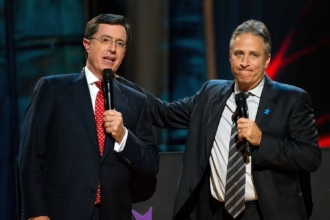Is the “big, beautiful” India-US trade deal slipping out of reach?
With just days to go before a 9 July deadline set by US President Donald Trump’s administration, hopes of clinching an interim trade pact between Delhi and Washington remain alive but increasingly entangled in hard bargaining.
Despite White House Press Secretary Karoline Leavitt hinting that the deal was imminent, and Indian Finance Minister Nirmala Sitharaman’s upbeat assertion that Delhi would welcome “a big, good, beautiful” agreement – in response to Trump’s claim that a trade deal with Delhi is coming and would “open up” the Indian market – negotiators remain locked in tough discussions.
Key sticking points persist, particularly over agricultural access, auto components and tariffs on Indian steel.
Indian trade officials have extended their stay in Washington for another round of talks, even as Delhi signals “very big red lines” on farm and dairy protections, and the US presses for wider market openings. The tone remains optimistic – but the window to strike a deal appears to be narrowing.
“The next seven days could determine whether India and the US settle for a limited ‘mini-deal’ or walk away from the negotiating table – at least for now,” says Ajay Srivastava, a former Indian trade official who runs Global Trade Research Initiative (GTRI), a Delhi-based think tank.
That uncertainty hinges on a few key flashpoints – none more contentious than agriculture.
“There are two real challenges to concluding an initial agreement. First on the list is US access to the Indian market for basic agriculture products. India will need to protect its basic agriculture sector for economic and political reasons,” Richard Rossow, who tracks India’s economy at Washington’s Center for Strategic and International Studies, told the BBC.
For years, Washington has pushed for greater access to India’s farm sector, seeing it as a major untapped market. But India has fiercely protected it, citing food security, livelihoods and interests of millions of small farmers.
Mr Rossow says the “second issue is India’s non-tariff barriers. Issues like India’s growing set of ‘Quality Control Orders’ (QCO) are significant obstacles to US market access and may prove tricky to meaningfully handle in a trade deal”.
The US has raised concerns over what it calls India’s growing and burdensome import-quality rules. Over 700 QCOs – part of the “self-reliant India” push – aim to curb low-quality imports and promote domestic manufacturing. Suman Berry, a senior member of a government think tank Niti Aayog, has also called these rules a “malign intervention” that restrict imports and raise costs for domestic medium and small scale industries.
The elephant in the room is farm exports. India-US farm trade remains modest at $8bn, with India exporting rice, shrimp and spices, and the US sending nuts, apples and lentils. But as trade talks progress, Washington is eyeing bigger farm exports – maize, soya bean, cotton and corn – to help narrow its $45bn trade deficit with India.
Experts fear tariff concessions could pressure India to weaken its minimum support prices (MSP) and public procurement – key protections that shield farmers from price crashes by guaranteeing fair prices and stable crop purchases.
“No tariff cuts are expected for dairy products or key food grains like rice and wheat, where farm livelihoods are at stake. These categories are politically and economically sensitive, affecting over 700 million people in India’s rural economy,” says Mr Srivastava.
Curiously, a recent Niti Aayog paper recommends tariff cuts on US farm imports – including rice, dairy, poultry, corn, apples, almonds and GM soya – under a proposed India-US trade pact. It’s unclear, however, whether the proposal reflects official government thinking or remains a policy suggestion on paper.
“If the US were to say ‘no deal’ if India does not include access on basic agriculture, then clearly American expectations were not set correctly. Any democratically-elected government will have political limits to commercial policy choices,” says Mr Rossow.
So what could happen with the deal now?
Experts like Mr Srivastava believe that the “more likely outcome is a limited trade pact” – styled after the US-UK mini trade deal announced on 8 May.
Under the proposed deal, India may cut tariffs on a range of industrial goods – including automobiles, a long-standing US demand – and offer limited agricultural access via tariff cuts and quotas on select products like ethanol, almonds, walnuts, apples, raisins, avocados, olive oil, spirits and wine.
Beyond tariff cuts, the US is likely to push India for large-scale commercial buys – from oil and LNG to Boeing aircraft, helicopters and nuclear reactors. Washington may also seek FDI easing in multi-brand retail, benefiting firms like Amazon and Walmart, and relaxed rules on re-manufactured goods.
“This ‘mini-deal’, if concluded, would therefore focus on tariff reductions and strategic commitments, leaving broader FTA issues – including services trade, intellectual property (IP) rights and digital regulations – for a future negotiation,” says Mr Srivastava.
At the start, the India-US trade talks appeared to be grounded in a clear and fair vision.
“The two leaders [Trump and Modi] laid out a simple concept in their first summit this year. The US would focus on manufactured goods that are capital-intensive, while India would focus on items that are labour-intensive,” says Mr Rossow. But things appear to have changed since.
If talks fail, Trump is unlikely to reinstate the 26% tariffs on India, experts believe.
While 57 countries faced these levies in April, only the UK has secured a deal so far. Targeting India specifically could seem unfair. “Still, with Trump, surprises can’t be ruled out,” says Mr Srivastava.









